Filter by

Proceeding of 2021 International Conference on Wireless Communications, Netwo…
This open access proceedings includes original, unpublished, peer-reviewed research papers from the International Conference on Wireless Communications, Networking and Applications (WCNA2021), held in Berlin, Germany on December 17-19th, 2021. The topics covered include but are not limited to wireless communications, networking and applications.The papers showcased here share the latest finding…
- Edition
- -
- ISBN/ISSN
- 978-981-19-2456-9
- Collation
- XXXV, 1223
- Series Title
- -
- Call Number
- -
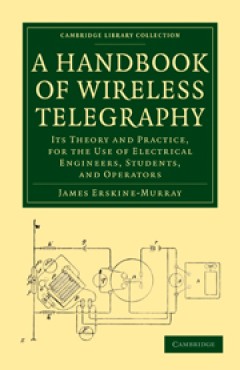
A Handbook of Wireless Telegraphy Its Theory and Practice, for the Use of El…
James Erskine-Murray (1868–1927) was a Scots expert in wireless technology who studied under Lord Kelvin for six years at Glasgow University before arriving at Trinity College, Cambridge as a research student. He eventually became a telegraphy consultant and published this work in 1907. Its aim was to inform engineers, students, and radio operators about many aspects of a rapidly changing tec…
- Edition
- -
- ISBN/ISSN
- 9780511795411
- Collation
- -
- Series Title
- Cambridge Library Collection - Technology
- Call Number
- -
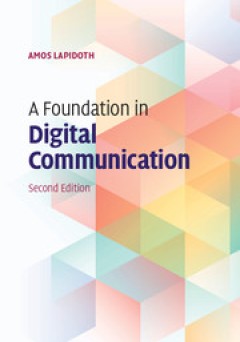
A Foundation in Digital Communication
Written in the intuitive yet rigorous style that readers of A Foundation in Digital Communication have come to expect, this second edition includes entirely new chapters on the radar problem (with Lyapunov's theorem) and intersymbol interference channels, new discussion of the baseband representation of passband noise, and a simpler, more geometric derivation of the optimal receiver for the add…
- Edition
- -
- ISBN/ISSN
- 9781316822708
- Collation
- -
- Series Title
- -
- Call Number
- -
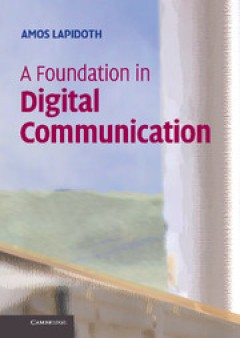
A Foundation in Digital Communication
This intuitive yet rigorous introduction derives the core results of digital communication from first principles. Theory, rather than industry standards, motivates the engineering approaches, and key results are stated with all the required assumptions. The book emphasizes the geometric view, opening with the inner product, the matched filter for its computation, Parseval's theorem, the samplin…
- Edition
- -
- ISBN/ISSN
- 9780511981234
- Collation
- -
- Series Title
- -
- Call Number
- -
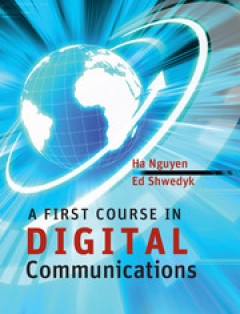
A First Course in Digital Communications
Communication technology has become pervasive in the modern world, and ever more complex. Focusing on the most basic ideas, this carefully paced, logically structured textbook is packed with insights and illustrative examples, making this an ideal introduction to modern digital communication. Examples with step-by-step solutions help with the assimilation of theoretical ideas, and MATLAB exerci…
- Edition
- -
- ISBN/ISSN
- 9780511841583
- Collation
- -
- Series Title
- -
- Call Number
- -

6G: The Next Horizon: From Connected People and Things to Connected Intelligence
The first book on 6G wireless presents an overall vision for 6G - an era of intelligence-of-everything - with drivers, key capabilities, use cases, KPIs, and the technology innovations that will shape it. These innovations include immersive human-centric communication, sensing, localization, and imaging, connected machine learning and networked AI, Industry 4.0 and beyond with connected intelli…
- Edition
- -
- ISBN/ISSN
- 9781108989817
- Collation
- -
- Series Title
- -
- Call Number
- -

The Moral Economy of Mobile Phones: Pacific Islands Perspectives
The moral economy of mobile phones implies a field of shifting relations among consumers, companies and state actors, all of whom have their own ideas about what is good, fair and just. These ideas inform the ways in which, for example, consumers acquire and use mobile phones; companies promote and sell voice, SMS and data subscriptions; and state actors regulate both everyday use of mobile pho…
- Edition
- -
- ISBN/ISSN
- 9781760462086
- Collation
- -
- Series Title
- -
- Call Number
- -
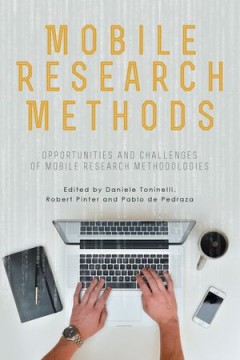
Mobile Research Methods: Opportunities and challenges of mobile research meth…
Daily activity sees data constantly flowing through cameras, the internet, satellites, radio frequencies, sensors, private appliances, cars, smartphones, tablets and the like. Among all the tools currently used, mobile devices, especially mobile phones, smartphones and tablets, are the most widespread, with their use becoming prevalent in everyday life within both developed and developing count…
- Edition
- -
- ISBN/ISSN
- 9781909188549
- Collation
- -
- Series Title
- -
- Call Number
- -

A Comprehensive Review of Methods for the Channel Allocation Problem
The study of the channel allocation problem has received much attention during the last decade. Several techniques such as genetic algorithm, artificial neural network, simulated annealing, tabu search and others have been used. This book is devoted to compiling all the techniques that have been used to solve the channel allocation problem. Each of the methods is described fully in a manner tha…
- Edition
- -
- ISBN/ISSN
- 9781920677534
- Collation
- -
- Series Title
- -
- Call Number
- -
 Computer Science, Information & General Works
Computer Science, Information & General Works  Philosophy & Psychology
Philosophy & Psychology  Religion
Religion  Social Sciences
Social Sciences  Language
Language  Pure Science
Pure Science  Applied Sciences
Applied Sciences  Art & Recreation
Art & Recreation  Literature
Literature  History & Geography
History & Geography